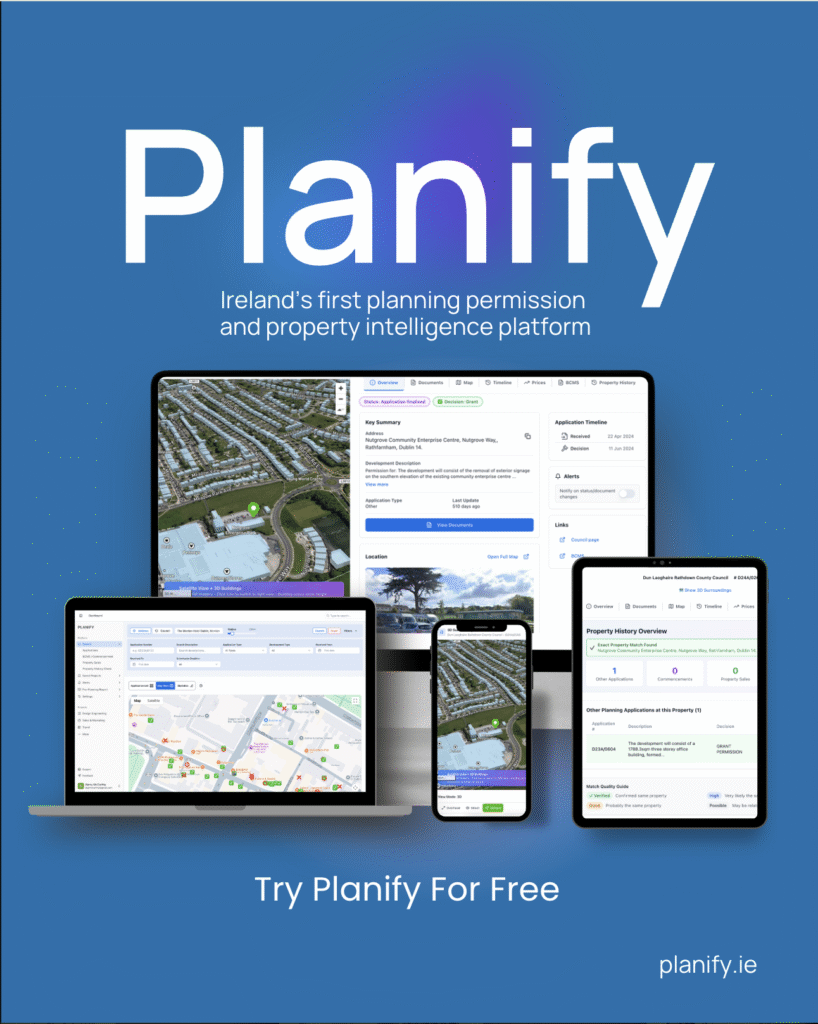Environmental Impact Assessments (EIA) and Strategic Environmental Assessments (SEA)

Introduction
Environmental Impact Assessments (EIA) and Strategic Environmental Assessments (SEA) are critical components in the planning and development process, especially for large-scale residential or commercial projects. These assessments ensure that the environmental implications of developments are fully understood and considered before any planning permission is granted. This guide provides a detailed overview of how EIAs and SEAs are involved in the development process, focusing on their significance, methodology, and the role they play in promoting sustainable development.
Understanding EIA and SEA
Environmental Impact Assessment (EIA): An EIA is a process that identifies and assesses the environmental effects of proposed developments before decisions are made. It covers a wide range of environmental factors, including biodiversity, water, air and soil quality, and cultural heritage. The EIA process is project-specific and is usually required for large-scale developments that have the potential to significantly impact the environment.
Strategic Environmental Assessment (SEA): Unlike the EIA, which is project-specific, the SEA is a broader assessment that evaluates the environmental impacts of proposed plans, programmes, and policies. SEAs are used to integrate environmental considerations into the preparation and adoption of strategic decisions that guide future development projects.
The Role of EIA and SEA in Large-Scale Developments
For large-scale residential or commercial developments, EIAs and SEAs play a crucial role in ensuring environmental sustainability and compliance with regulatory requirements. These assessments:
- Inform Decision-Making: EIAs and SEAs provide valuable information about the environmental consequences of proposed developments, helping decision-makers to consider alternative options and mitigation measures.
- Prevent Environmental Damage: By identifying potential environmental impacts early in the planning process, these assessments help to avoid or reduce negative effects on the environment.
- Promote Public Participation: Both EIAs and SEAs involve public consultation, allowing stakeholders and the general public to express their views and concerns about the environmental impacts of developments.
- Support Sustainable Development: By integrating environmental considerations into the planning and decision-making process, EIAs and SEAs contribute to the achievement of sustainable development goals.
The EIA Process
The EIA process typically involves several key stages:
- Screening: Determines whether a proposed project requires an EIA based on its size, nature, and potential environmental impacts.
- Scoping: Identifies the key environmental issues and the extent of the assessment required.
- Impact Assessment: Evaluates the potential environmental impacts of the proposed project, considering both negative and positive effects.
- Mitigation: Proposes measures to avoid, reduce, or compensate for adverse environmental impacts.
- Reporting: Produces an Environmental Impact Statement (EIS) that summarises the findings of the EIA and presents them to the decision-making body.
- Review: The EIS is reviewed by the relevant authority to ensure it meets the required standards and adequately addresses the potential environmental impacts.
- Decision-Making: The decision-making body considers the EIS, along with other factors, to make an informed decision about the proposed development.
- Monitoring and Compliance: Ensures that mitigation measures are implemented and that the project complies with environmental regulations.
The SEA Process
The SEA process is similar to the EIA but operates at a strategic level. It involves:
- Setting the Context and Objectives: Establishes the environmental, social, and economic objectives that the plan, programme, or policy should achieve.
- Developing Alternatives: Considers different ways to achieve the objectives while minimising environmental impacts.
- Assessing the Effects: Evaluates the environmental consequences of each alternative.
- Consultation: Engages with the public and stakeholders to gather feedback on the environmental report and the proposed plan or programme.
- Monitoring: Implements a monitoring programme to track the environmental effects of the plan or programme and ensure that mitigation measures are effective.
Key Environmental Factors Considered in an EIA
- Biodiversity: This includes the effects on local flora and fauna, habitats, and protected species. The assessment looks at potential habitat loss, fragmentation, or degradation, and the impact on biodiversity conservation.
- Water Resources: The assessment evaluates the impact on water quality and quantity, including surface water and groundwater. It considers pollution risks, changes in hydrology, and the potential for flooding or water scarcity.
- Air Quality: This involves assessing the emission of pollutants into the air, including dust, gases, and particulate matter. The impact on local air quality and contribution to broader air pollution issues are evaluated.
- Soil and Land Use: The EIA examines the impact on soil quality and land use, including soil contamination, erosion, and the loss of fertile land or agricultural productivity.
- Noise and Vibration: The assessment considers the potential for increased noise and vibration levels, which can affect both human populations and wildlife.
- Landscape and Visual Impact: This includes changes to the landscape and visual environment, assessing how the development might alter the character and appearance of an area.
- Cultural Heritage: The EIA evaluates the potential impacts on archaeological sites, historic buildings, and cultural landscapes, considering both direct and indirect effects.
- Climate Change: Assessments increasingly consider a project’s contribution to climate change through greenhouse gas emissions, as well as its vulnerability to climate change impacts, such as sea-level rise or increased weather variability.
- Socio-economic Impacts: Though not strictly environmental, socio-economic impacts, including effects on local communities, employment, and public health, are often considered due to their interrelation with environmental factors.
The Role of Public Participation in the EIA and SEA Processes
Public participation is a cornerstone of the EIA and SEA processes, ensuring that the views and knowledge of the public and stakeholders are considered. This engagement contributes in several key ways:
- Enhancing Transparency and Trust: Public participation helps to make the assessment process more transparent and builds trust between developers, authorities, and the community.
- Improving Quality of Assessments: Input from the public can provide additional data and local knowledge that might not be otherwise available, leading to more comprehensive and accurate assessments.
- Identifying Concerns and Alternatives: Engagement with the community and stakeholders can highlight concerns and potential impacts that may not have been initially considered. It can also help in identifying alternative approaches or mitigation measures.
- Facilitating Social Acceptance: By involving the public in the decision-making process, there is a greater likelihood of social acceptance of the project, reducing the potential for conflicts and delays.
- Promoting Environmental Stewardship: Public participation encourages a sense of ownership and responsibility towards the local environment, promoting sustainable development practices.
Conclusion
EIAs and SEAs are indispensable tools in the planning and development process for large-scale residential or commercial projects. They ensure that environmental considerations are central to decision-making, promoting sustainable development and preventing environmental degradation. By following the structured processes of EIAs and SEAs, developers can mitigate environmental impacts, enhance project sustainability, and contribute to the broader goal of environmental protection.
FEEDBACK!
We hope you found what you were searching for on this page or found the information valuable.
If not, or if you feel we are missing important information please get in touch!





